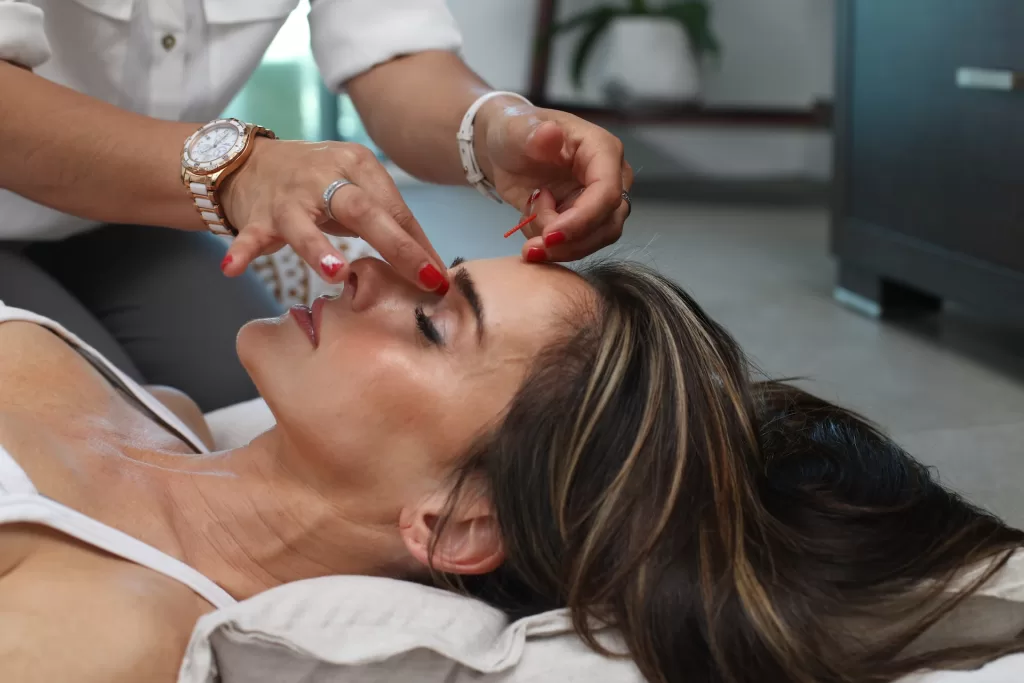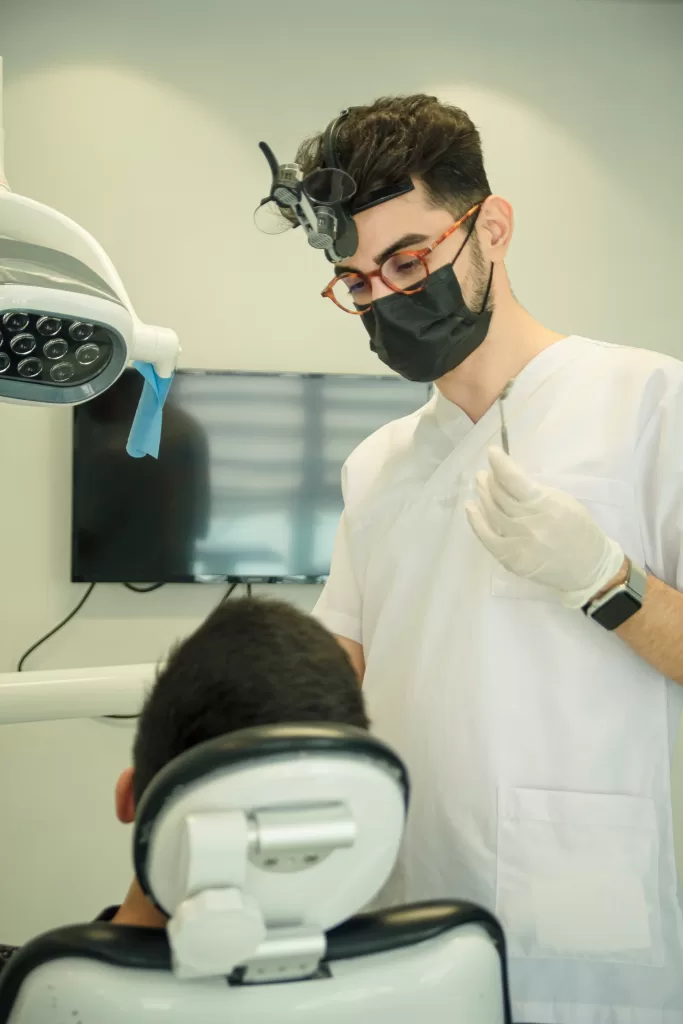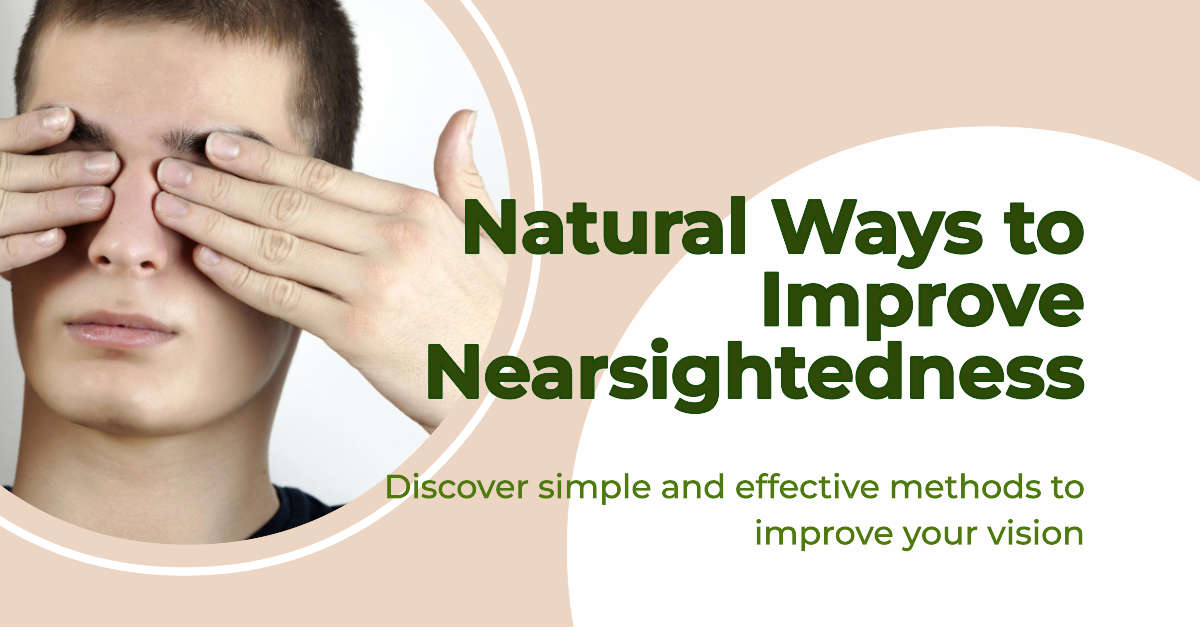Are you looking for ways to improve nearsightedness naturally? This article provides tips that can help you reduce myopia naturally and promote better eye health.
From eye exercises and outdoor activities to proper nutrition and regular eye check-ups, these tips offer a holistic approach to managing nearsightedness.
Whether you’re interested in trying peripheral vision training, exploring the benefits of essential oils, or incorporating yoga into your routine, there are various natural methods that may help slow the progression of myopia and improve your overall eye health.
So, let’s dive into these tips and discover how you can take care of your eyes naturally.
Tips for Improving Nearsightedness Naturally
| Myopia Natural Remedies |
|---|
| 1. Eye Exercises |
| Incorporate eye exercises in your routine. |
| Try the “20-20-20 rule” to reduce screen strain. |
| Practice “palming” to relax eye muscles. |
| 2. Outdoor Activities |
| Spend time outdoors, especially in sunlight. |
| Engage in sports, hiking, or gardening. |
| Aim for at least 2 hours outdoors daily. |
| 3. Proper Nutrition |
| Consume foods rich in vitamins A, C, E, zinc. |
| Include carrots, leafy greens, nuts, and fish. |
| Limit processed and sugary foods. |
| Stay hydrated with water for eye health. |
| 4. Adequate Sleep |
| Get 7-8 hours of sleep for eye health. |
| Maintain a regular sleep schedule. |
| Use eye masks and humidifiers for comfort. |
| 5. Reduce Eye Strain |
| Take breaks during screen time (20-20-20). |
| Adjust workspace lighting and screen position. |
| Use anti-glare filters for screens. |
| 6. Use of Essential Oils |
| Lavender oil for relaxation and eye strain. |
| Frankincense oil for anti-inflammatory benefits. |
| Consult eye doctor for proper treatment. |
| 7. Acupuncture |
| Consider acupuncture to improve circulation. |
| Target specific acupoints for eye health. |
| Consult a qualified acupuncturist. |
| 8. Yoga |
| Practice palming and downward-facing dog pose. |
| Promotes relaxation and better blood flow. |
| Enhances overall eye health. |
| 9. Peripheral Vision Training |
| Train peripheral vision to reduce strain. |
| Explore the Bates method for eye exercises. |
| Regular practice supports eye health. |
| 10. Regular Eye Check-ups |
| Have comprehensive eye exams every 1-2 years. |
| Detect refractive errors and other conditions. |
| Maintain good eye care habits. |
Remember, while these tips may offer potential benefits for improving nearsightedness naturally, they are not a substitute for professional eye care. Always consult with an eye doctor for personalized advice and treatment options.

Eye Exercises
One effective way to improve nearsightedness naturally is by incorporating eye exercises into your daily routine. These exercises can help strengthen the eye muscles and improve vision.
One example of an eye exercise is called the “20-20-20 rule.” This involves taking a break from staring at screens every 20 minutes and looking at a distant object at least 20 feet away for 20 seconds. This exercise helps reduce eye strain caused by prolonged screen time and promotes better eye health.
Another exercise is called “palming,” where you rub your hands together to generate warmth and then place your palms over your closed eyes. This helps relax the eye muscles and relieve eye strain.
Spending more time outdoors is another natural way to improve nearsightedness. Studies have shown that spending time outdoors, especially in natural sunlight, can help reduce the risk of developing nearsightedness, particularly in children.
The natural light and distant objects in outdoor environments help relax the eyes and reduce eye strain. Aim to spend at least 2 hours a day outdoors to reap the benefits for your eye health. Engaging in outdoor activities such as playing sports, hiking, or gardening can also provide additional benefits for your overall well-being while improving your eyesight naturally.

Outdoor Activities
Spending time outdoors is an effective way to improve nearsightedness naturally. Studies have shown that spending time outdoors, especially in natural sunlight, can help reduce the risk of developing nearsightedness, particularly in children.
Outdoor activities such as playing sports, hiking, or gardening can also provide additional benefits for your overall well-being while improving your eyesight naturally. It is recommended to spend at least 2 hours a day outdoors to reap the benefits for your eye health.
One way to incorporate outdoor activities into your daily routine is by taking a walk during your lunch break or after dinner. This can help you get the recommended 2 hours of outdoor time per day while also providing other health benefits such as stress reduction and improved cardiovascular health.
Another way to improve your eyesight naturally while spending time outdoors is by engaging in activities that require focusing on distant objects, such as bird watching or stargazing. These activities can help relax the eyes and reduce eye strain, which can help improve your vision over time.

Proper Nutrition
Proper nutrition is essential for maintaining good eye health and reducing the risk of developing nearsightedness. Consuming a diet rich in vitamins and minerals such as vitamin A, vitamin C, vitamin E, and zinc can help improve your vision naturally.
Foods such as carrots, leafy greens, citrus fruits, nuts, and seeds are all great sources of these essential nutrients. Additionally, omega-3 fatty acids found in fish such as salmon and tuna can also help improve eye health and reduce the risk of eye problems such as macular degeneration and dry eye syndrome.
Another way to improve your eyesight naturally through proper nutrition is by reducing your intake of processed and sugary foods. These types of foods can contribute to inflammation in the body, which can lead to a variety of health problems including eye problems. Instead, focus on consuming whole, nutrient-dense foods such as fruits, vegetables, whole grains, and lean proteins.
Drinking plenty of water throughout the day can also help keep your eyes hydrated and reduce the risk of dry eye syndrome. By making these dietary changes, you can help improve your vision naturally and reduce the risk of developing nearsightedness.

Adequate Sleep
Getting adequate sleep is crucial for maintaining good eye health and reducing the risk of developing nearsightedness. Lack of sleep can lead to eye strain, dry eyes, and other vision problems. It is recommended that adults get at least 7-8 hours of sleep per night to promote good eye health.
To improve your sleep quality, try to establish a regular sleep schedule and create a relaxing bedtime routine. Avoid using electronic devices such as smartphones and computers before bed, as the blue light emitted by these devices can interfere with your sleep cycle and cause eye strain.
Another way to improve your eyesight naturally through adequate sleep is by using an eye mask. Eye masks can help block out light and promote deeper, more restful sleep. They can also help reduce eye strain caused by exposure to bright light during the day.
Additionally, using a humidifier in your bedroom can help keep your eyes hydrated and reduce the risk of dry eye syndrome, which can be exacerbated by dry indoor air. By making these simple changes to your sleep routine, you can help improve your vision naturally and reduce the risk of developing nearsightedness.

Reduce Eye Strain
Reducing eye strain is an important step in improving myopia naturally. Eye strain can cause discomfort, headaches, and other vision problems. One way to reduce eye strain is by taking frequent breaks when using electronic devices such as computers and smartphones. The American Optometric Association recommends the 20-20-20 rule, which involves taking a break every 20 minutes to look at an object 20 feet away for 20 seconds. This can help reduce eye strain caused by prolonged screen time and promote better eye health.
Another way to reduce eye strain is by adjusting the lighting in your workspace. Avoid using bright overhead lights and instead use a desk lamp with a soft, warm light. This can help reduce glare and eye strain.
Another way to reduce eye strain and improve your eyesight naturally is by adjusting the distance between your eyes and your computer screen. The screen should be positioned at arm’s length and the top of the screen should be at or slightly below eye level. This can help reduce eye strain caused by looking at a screen for extended periods of time.
Additionally, using an anti-glare screen filter can help reduce glare and eye strain caused by bright screens. By making these simple adjustments to your workspace, you can help reduce eye strain and improve your vision naturally.

Use of Essential Oils
Some essential oils may help reduce myopia naturally by promoting eye health and reducing eye strain. For example, lavender oil has been shown to have a calming effect on the eyes, which can help reduce eye strain and fatigue.
A study published in the journal Evidence-Based Complementary and Alternative Medicine found that inhaling lavender oil can help reduce eye discomfort and improve visual performance.
To use lavender oil for eye care, simply add a few drops to a bowl of warm water and soak a clean cloth in the mixture. Then, place the cloth over your closed eyes for 10-15 minutes to help relax your eyes and reduce eye strain.
Another essential oil that may help reduce myopia naturally is frankincense oil. Frankincense oil has anti-inflammatory properties that can help reduce eye inflammation and promote eye health.
To use frankincense oil for eye care, dilute a few drops of the oil in a carrier oil, such as coconut oil, and apply the mixture around your eyes before going to bed.
While essential oils may help reduce eye strain and promote eye health, they cannot correct refractive errors that cause myopia. Therefore, it is important to visit an eye doctor for an eye exam to determine the best course of treatment for your myopia.

Acupuncture
Acupuncture is a traditional Chinese medicine practice that involves the insertion of thin needles into specific points on the body to promote healing and balance. While there is limited scientific evidence on the effectiveness of acupuncture in curing myopia, some studies suggest that it may help reduce myopia naturally by improving blood circulation and reducing eye strain.
Acupuncture treatments for myopia typically involve targeting specific acupoints around the eyes and face to stimulate the flow of energy and promote overall eye health.
During an acupuncture session for myopia, an acupuncturist may insert needles into acupoints such as BL2 (Zanzhu), GB14 (Yangbai), and ST2 (Sibai). These acupoints are believed to be connected to the eyes and can help reduce eye strain and improve vision.
The number of acupuncture sessions required may vary depending on the individual and the severity of the myopia. It is important to consult with a qualified acupuncturist who specializes in eye care to determine the most appropriate treatment plan for your specific needs.
While acupuncture may offer potential benefits for reducing myopia naturally, it is important to note that it is not a substitute for professional eye care. It is still crucial to visit an eye doctor for a comprehensive eye exam to assess the refractive error and determine the best course of treatment.
Note: While there is some anecdotal evidence and limited studies suggesting the potential benefits of acupuncture for myopia, more research is needed to establish its effectiveness as a standalone treatment. It is always important to consult with healthcare professionals and make informed decisions based on individual circumstances.

Yoga
Yoga is a holistic practice that involves physical postures, breathing exercises, and meditation to promote overall health and well-being. While there is no scientific evidence to suggest that yoga can cure myopia, some yoga poses may help reduce myopia naturally by promoting eye health and reducing eye strain.
For example, the palming pose is a simple yoga exercise that involves covering your eyes with your palms to help relax your eyes and reduce eye strain. To perform the palming pose, sit comfortably with your eyes closed and place your palms over your eyes, making sure that there is no pressure on your eyeballs. Breathe deeply and relax for a few minutes to help soothe your eyes and reduce eye strain.
Another yoga pose that may help reduce myopia naturally is the downward-facing dog pose. This pose helps improve blood circulation and reduce eye strain by reversing the flow of blood to the head and neck.
To perform the downward-facing dog pose, start on your hands and knees with your wrists directly under your shoulders and your knees directly under your hips. Then, lift your hips up and back, straightening your arms and legs to form an inverted V-shape. Hold the pose for a few breaths and then release. Practicing yoga every day can help improve overall eye health and reduce the progression of myopia.

Peripheral Vision Training
Peripheral vision training is a technique that involves training the eyes to see objects in the periphery, which can help reduce eye strain and improve overall eye health. While there is no scientific evidence to suggest that peripheral vision training can cure myopia, it may help reduce myopia naturally by promoting eye health and reducing eye strain.
To perform peripheral vision training, sit in a comfortable position and focus on an object in front of you. Then, without moving your eyes, try to become aware of objects in your peripheral vision. You can also try moving your eyes from side to side while keeping your head still to help improve peripheral vision.
Another technique that may help reduce myopia naturally is the Bates method, which involves a series of eye exercises designed to improve eye muscle coordination and reduce eye strain. One of the exercises in the Bates method involves palming, which is similar to the yoga pose mentioned earlier.
To perform palming, sit comfortably with your eyes closed and place your palms over your eyes, making sure that there is no pressure on your eyeballs. Breathe deeply and relax for a few minutes to help soothe your eyes and reduce eye strain. Practicing the Bates method and peripheral vision training every day can help improve overall eye health and reduce the progression of myopia.

Regular Eye Check Ups
Regular eye checkups are an essential part of maintaining healthy vision and preventing the progression of myopia. It is recommended to have a comprehensive eye exam every one to two years, depending on your age and risk factors.
During an eye exam, an eye doctor will check for refractive errors, such as myopia, and prescribe corrective lenses, such as glasses or contact lenses, to help improve vision. In addition, an eye exam can also detect other eye conditions, such as cataracts, glaucoma, and macular degeneration, which can cause vision loss if left untreated.
In addition to regular eye exams, there are other ways to reduce myopia naturally and slow the progression of nearsightedness.
For example, taking regular breaks when using digital devices and practicing good eye care habits, such as maintaining a healthy diet and wearing sunglasses to protect against ultraviolet rays, can help reduce eye strain and promote overall eye health.
It is also important to avoid staring at a computer screen or other digital devices for long periods of time, as this can worsen myopia and cause other eye problems. By taking steps to maintain healthy vision and seeking professional eye care when needed, it is possible to reduce the progression of myopia and maintain good eye health.
Natural Myopia Remedies
Myopia, or nearsightedness, is a common vision problem that affects many people, especially children. While there is no known cure for myopia, there are ways to reduce myopia naturally and slow its progression.
Eye care is essential for maintaining healthy vision and preventing the development of myopia. Regular eye exams can detect refractive errors and other eye conditions, and corrective lenses, such as glasses or contact lenses, can help improve vision. Eye exercises and natural treatments, such as peripheral vision training and yoga, may also help reduce eye strain and promote overall eye health.
It is important to note that while natural treatments may offer potential benefits for reducing myopia naturally, they are not a substitute for professional eye care.
In some cases, refractive eye surgery, such as LASIK, may be recommended to correct myopia. It is important to consult with an eye doctor to determine the best course of treatment for your specific needs. By taking steps to maintain healthy vision and seeking professional eye care when needed, it is possible to reduce the progression of myopia and maintain good eye health.

